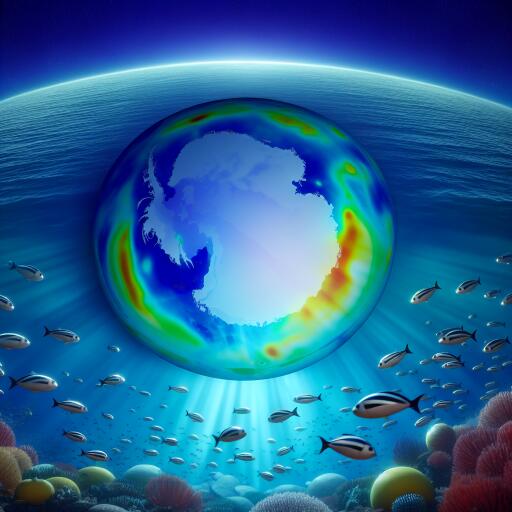
Longer persisting ozone over Antarctica hole puts sea life at UV risk
In recent decades, the ominous ozone hole that annually appears over Antarctica signaled a global environmental crisis. While concerted international efforts have led to a gradual reduction of this atmospheric void, new research reveals a troubling trend: the hole is not only shrinking but also remaining open for extended periods, stretching into the early summer. This shift poses significant risks to the region’s delicate marine ecosystems and the diverse wildlife reliant on them for survival.
The ozone layer acts as Earth’s sunscreen, filtering out harmful ultraviolet (UV) radiation. However, the persistence of chemicals like chlorofluorocarbons (CFCs) in the atmosphere continues to challenge the ozone layer’s recovery. Notably, the Antarctic ozone hole has started to linger longer, into December, a critical time for the reproductive cycles of species like penguins and seals and the growth phase of plant life along the continent’s coasts.
The extended exposure to increased UV radiation due to the prolonged ozone hole poses several ecological threats. Penguins and seals, while generally protected by their fur and feathers, could see their young at risk. The intense UV light, magnified by reflection off ice and snow, raises concerns about potential damage to these creatures’ eyes and skin, alongside broader implications for their overall health and survival prospects.
On the microscale, the changes are equally daunting. Antarctic moss and tiny marine organisms, including phytoplankton and krill, have adapted to produce natural sunscreens. These defenses help shield them from UV radiation but also divert energy from growth and reproduction, impacting broader food webs. The decline in sea ice, a condition exacerbated by climate change, further diminishes the natural barriers protecting these foundational species, allowing more UV light to penetrate marine environments.
This environmental situation is concerning for the Antarctic ecosystem, which is already facing pressures from warming waters and acidification. The reduced sea ice cover and extended exposure to UV radiation threaten the survival of krill and phytoplankton populations, critical components of the Antarctic food web. A decrease in these populations would have cascading effects up the food chain, impacting everything from fish to marine mammals and birds.
The resilience of the Antarctic ecosystem is being tested like never before. Although the global community has successfully come together in the past to address the challenges to the ozone layer through bans on CFCs and related chemicals, the emerging complexities of climate change and extended ozone hole durations highlight the need for continued vigilance and action.
As we move forward, the intertwining of ozone recovery with broader climate goals underscores the urgency of addressing carbon emissions and other environmental impacts. The persistence of the ozone hole into the Antarctic summer serves as a stark reminder of the interconnected challenges facing our global environment, urging immediate and concerted action to safeguard the future of Antarctica’s unique and fragile ecosystem.





Leave a Reply